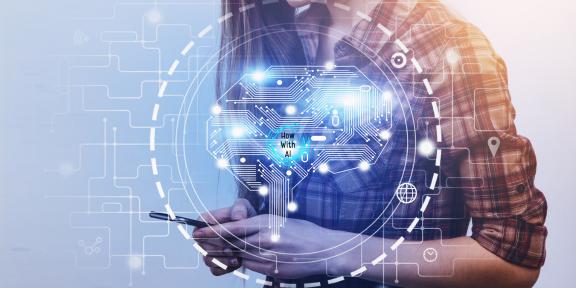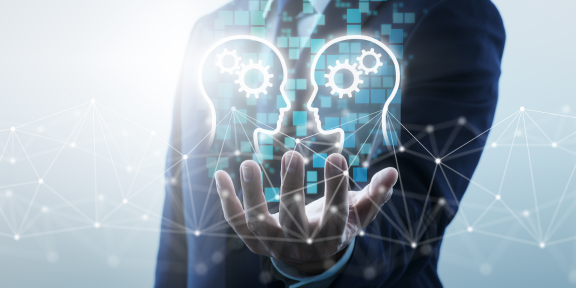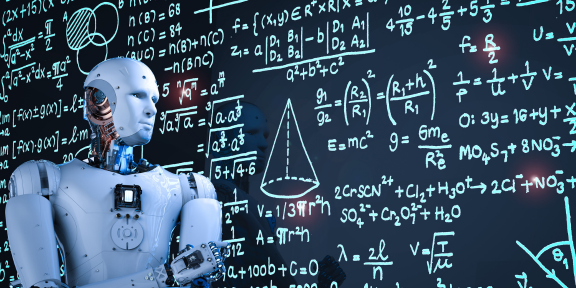AI in Teaching: Revolutionizing Traditional Teaching Methods with Artificial Intelligence

Welcome to the future of education! In recent years, the concept of transforming traditional teaching methods with artificial intelligence has gained significant momentum. AI technology has the potential to revolutionize the field of education by modernizing teaching techniques and providing personalized learning experiences.
The integration of AI technology in the classroom has already shown promising results with innovative teaching techniques and enhanced student engagement. AI can analyze student data to create customized learning paths, provide personalized feedback, and assist teachers in assessing student progress.
However, as with any new technology, there are challenges and concerns that need to be addressed, including data privacy and the need for proper teacher training. In this article, we will explore the role of AI in education, innovative teaching techniques powered by AI, and the impact of AI on teacher-student collaboration. We will also address misconceptions and FAQs related to AI in education.
Join us as we delve into the exciting world of AI-powered teaching strategies and see how they are transforming traditional teaching methods with artificial intelligence.
The Role of AI in Teaching
Artificial Intelligence (AI) has the potential to transform traditional teaching methods and enhance the educational experience for students. AI technology is being integrated into classrooms worldwide, providing teachers with new tools to engage students and personalize learning experiences.
One of the key roles of AI in teaching is to assist teachers in providing individualized support to each student. AI algorithms can analyze student data and provide personalized recommendations, allowing teachers to tailor their instruction to meet the unique needs of each student.
The Benefits of AI in Teaching
Integrating AI technology in the classroom offers several benefits, including:
- Personalized Learning: AI algorithms can analyze data to create customized learning paths for each student, enabling personalized learning experiences.
- Improved Student Engagement: Interactive AI tools, virtual simulations, and gamification techniques can make learning more engaging and immersive for students.
- Efficient Feedback: AI-powered assessment tools can provide students with immediate feedback, allowing them to identify areas of strength and weakness and improve their learning outcomes.
AI also has the potential to revolutionize the way teachers assess student progress. By automating routine tasks such as grading, teachers can focus on providing personalized feedback and support to each student. This can lead to more effective instruction and improved learning outcomes.

The Potential of AI Technology in Teaching
The potential of AI in teaching is vast and exciting. As AI continues to evolve, it has the potential to provide teachers with even more powerful tools to enhance teaching and learning experiences. From virtual classrooms to adaptive learning software, AI has the potential to transform education in ways that were once unimaginable.
As more schools and educational institutions embrace AI technology, we can expect to see significant advancements in the field of education. By harnessing the power of AI, teachers can provide more personalized learning experiences, improve student engagement, and ensure that every student has the opportunity to reach their full potential.
Innovative Teaching Techniques Powered by AI
Artificial intelligence (AI) is revolutionizing traditional teaching methods by providing innovative solutions for personalized learning experiences. AI-powered teaching techniques can adapt to individual needs and provide immediate feedback, greatly improving the quality of education for students.
One of the most effective AI-powered teaching techniques is adaptive learning. This method uses algorithms to analyze student performance data and create customized learning paths based on their strengths and weaknesses. Adaptive learning can lead to increased student engagement, improved understanding of concepts, and better overall academic performance.
Another innovative AI in teaching technique is gamification. Gamification involves incorporating elements of gameplay into learning activities to make them more interactive and engaging for students. AI-powered games can adapt to individual student needs and provide instant feedback, making the learning process more enjoyable and effective.
Virtual simulations are another AI in teaching technique that enables students to practice skills in a realistic, immersive environment. These simulations can range from simple simulations, such as a virtual dissection of a frog, to more complex simulations, such as a virtual flight simulator. Virtual simulations allow students to learn by doing, providing hands-on experience in a safe and controlled environment.
Overall, AI-powered teaching techniques are revolutionizing the field of education and providing personalized learning experiences for students. These techniques enhance student engagement, adapt to individual needs, and provide immediate feedback, greatly improving the quality of education for students.

Enhancing Student Engagement through AI
Artificial intelligence is transforming traditional teaching methods by modernizing classrooms and making learning more interactive and engaging. Through the use of AI-powered tools, teachers can now leverage innovative teaching techniques that can adapt to individual needs, interact with students, and provide personalized feedback. One of the most significant impacts of AI technology in education is its ability to enhance student engagement in the classroom.
Interactive AI tools, virtual simulations, and gamification techniques can all be used to make learning more engaging and immersive for students. AI can create a personalized learning experience by catering to each student’s learning style, strengths, and weaknesses. By providing instant feedback and adapting to students’ individual progress, AI can significantly increase student engagement in a way that was previously impossible for traditional methods.
AI for Personalized Learning
One of the most promising applications of AI in teaching is personalized learning. AI algorithms can analyze vast amounts of student data to create customized learning paths based on individual strengths, weaknesses, and learning styles. With personalized learning, students can progress at their own pace and focus on the areas where they need the most help.
Integrating AI in teaching can provide numerous benefits such as increased student engagement, higher academic achievement, and improved retention rates. In addition, personalized learning can empower students to take control of their own learning journey and develop a sense of ownership and accountability.
AI-powered learning platforms can provide personalized recommendations for students based on their performance on assessments and exercises. These recommendations can include additional learning resources, such as videos and articles, and suggest areas for improvement. AI can also provide immediate feedback to students, helping them to correct mistakes and reinforce learning.
By analyzing data on student progress, AI technology can identify patterns and trends that can help teachers to adjust their instruction methods for each student. Teachers can gain insights into individual student needs and provide targeted interventions to help struggling students catch up. The use of AI can also free up teachers’ time to focus on more individualized instruction and engagement with students.

Addressing Challenges and Concerns
While the integration of AI in teaching has the potential to revolutionize teaching methods, it also poses several challenges and concerns.
One of the primary concerns is data privacy. With the collection of personal student data, there is a risk of the data being accessed or used unlawfully. It is crucial that educational institutions take the necessary steps to protect student data and ensure that all data collection is done with proper consent and transparency.
Ethical considerations are also important to address. There is a risk that AI algorithms could perpetuate biases or discriminate against certain groups of people. It is important to ensure that AI technology is designed and implemented in an ethical and fair way.
Another concern is the need for proper teacher training. Teachers need to be equipped with the knowledge and skills to use AI-powered tools effectively in the classroom. Without proper training, the potential benefits of AI may not be fully realized.
Solutions to Address the Challenges
Despite these challenges, there are solutions to address them and ensure the successful integration of AI technology in education.
To address data privacy concerns, institutions can implement strict data protection policies and ensure that all data collection and usage comply with privacy laws. They can also work with technology providers that prioritize data privacy and offer secure solutions.
Ethical considerations can be addressed by ensuring that AI algorithms are designed to be fair and unbiased. Developers can train AI models on diverse sets of data and ensure that they are regularly audited to detect and correct any biases.
The need for proper teacher training can be addressed by providing professional development opportunities for teachers to learn about AI technology and how to effectively integrate it into their teaching practices. This will help ensure that teachers are confident and competent in using AI-powered tools in the classroom.
Overall, addressing the challenges and concerns related to the integration of AI technology in education is crucial for its successful adoption and implementation. By doing so, we can harness the potential of AI to revolutionize education and transform traditional teaching methods.

AI and Teacher-Student Collaboration
The integration of AI technology in education can not only transform teaching methods but can also enhance teacher-student collaboration. AI-powered tools can assist teachers in assessing student progress, providing feedback, and facilitating communication.
AI can help teachers save time on manual tasks such as grading and data analysis, allowing them to focus on creating effective lesson plans and providing personalized support to their students. This can lead to a more collaborative and engaging learning experience for students.
AI-Powered Assessment Tools
AI-powered assessment tools can provide teachers with detailed insights into student performance. These tools can analyze data from multiple sources, such as quizzes and assignments, and provide teachers with accurate, real-time feedback on student progress.
Teachers can use this data to create customized learning paths for students, providing targeted support and resources to help them succeed. This can lead to better outcomes for students and an improved learning experience.

Virtual Learning Environments
AI can also facilitate teacher-student collaboration in virtual learning environments. AI-powered virtual simulations and interactive tools can provide students with a more immersive learning experience, allowing them to explore complex subjects in a fun and engaging way.
Moreover, teachers can monitor student progress and provide feedback in real-time, ensuring that students are on track and providing personalized support when needed. This can lead to a more collaborative and effective learning experience for both students and teachers.
Overall, AI technology has the potential to revolutionize education and foster greater collaboration between teachers and students. As AI continues to advance, it will undoubtedly play an even more significant role in transforming the teaching and learning process.
The Future of AI in Teaching
As AI technology continues to advance, the future of education looks promising. With the ability to analyze vast amounts of student data and provide personalized learning paths, AI has the potential to revolutionize the way we approach teaching and learning.
One of the most exciting prospects of AI in teaching is the emergence of adaptive learning systems. These systems use machine learning algorithms to analyze student data and provide real-time feedback and personalized recommendations. They can identify areas where students are struggling and adjust the curriculum to meet their individual needs. This can help to improve student engagement and academic performance.
Another area of potential growth for AI in teaching is the development of intelligent tutoring systems. These systems use natural language processing and machine learning to provide personalized, one-on-one tutoring to students. They can adapt to the student’s learning style and pace, providing customized explanations and feedback. This can help to improve student understanding and retention of concepts.
As AI technology advances, we can also expect to see more interactive and immersive learning experiences. Virtual simulations and gamification techniques can make learning more engaging and motivating for students. AI can also analyze student engagement and provide personalized recommendations for learning activities based on their interests and preferences.
Overall, the future of AI in education is bright. While there are still challenges to overcome, such as privacy concerns and the need for proper teacher training, the potential benefits of AI in transforming teaching and learning methods are enormous.

Case Studies: AI Success Stories in Education
In recent years, the implementation of AI technology in education has shown promising results. Here are a few success stories that highlight the potential of AI in revolutionizing traditional teaching methods.
Success Story 1: Carnegie Learning
Carnegie Learning is an AI-based math curriculum that uses data analytics to create personalized learning paths for students. By analyzing student data, the system identifies individual strengths and weaknesses, creates customized learning paths, and provides instant feedback to students and teachers. Studies have shown that students using Carnegie Learning outperform their peers in traditional classrooms by up to 30%.
Success Story 2: Duolingo
Duolingo is an AI-powered language-learning platform that uses gamification techniques to engage and motivate learners. The platform tracks student progress, provides personalized feedback, and adjusts learning paths based on individual learning styles. A study conducted by the University of South Carolina showed that students using Duolingo improved their language skills 34% faster than those using traditional textbook methods.
Success Story 3: DreamBox Learning
DreamBox Learning is an AI-driven math program that adapts to student needs in real-time. The platform uses data analytics to track student progress, assess individual strengths and weaknesses, and provide customized learning plans. A study conducted by the University of Southern California found that students using DreamBox Learning showed significant improvements in math performance compared to those in traditional classrooms.
These success stories demonstrate the potential of AI technology in education and the positive impact it can have on student learning outcomes.

Overcoming Misconceptions about AI in Education
As with any emerging technology, there are many misconceptions surrounding the use of artificial intelligence (AI) in education. In this section, we aim to address some of the most common concerns and provide accurate information about the capabilities and limitations of AI technology.
Myth 1: AI will replace teachers
This is a common fear among educators and parents alike. The truth is that AI is not designed to replace teachers. Rather, it is meant to assist them in their teaching efforts and make their jobs easier. AI-powered tools can help teachers personalize learning experiences, provide feedback, and assess student progress more efficiently.
Myth 2: AI is too expensive for most schools to implement
While it is true that some AI technologies can be expensive, there are many affordable options available. In fact, many edtech companies are working to make AI more accessible to schools and teachers. There are also free AI-powered tools that can be used to enhance teaching and learning experiences.
Myth 3: AI is only beneficial for high-achieving students
Another misconception is that AI technology is only effective for high-achieving students. In reality, AI can be used to personalize learning experiences for all students, regardless of their abilities. AI algorithms can analyze student data to create customized learning paths and provide recommendations that match individual needs and learning styles.
Myth 4: AI can replace human interaction and socialization in the classroom
While it is true that AI-powered tools can help students learn independently, they cannot replace human interaction and socialization in the classroom. AI can actually facilitate collaboration and communication between teachers and students, as well as among peers. AI-powered tools can also help students build critical thinking and problem-solving skills, which can be applied in social situations.
Wrap Up of AI in Teaching
By addressing these and other misconceptions, we hope to create a better understanding of the capabilities and limitations of AI technology in education. With proper implementation and training, AI can help revolutionize teaching methods and provide personalized, engaging learning experiences for all students.

FAQs about AI in Education
As AI technology continues to revolutionize traditional teaching methods, many educators and students are understandably curious about its capabilities, limitations, and implementation. Here are some frequently asked questions about AI in education:
What is AI technology in education?
AI technology in education refers to the use of artificial intelligence to enhance teaching and learning experiences. It can range from AI-powered virtual tutors, interactive tools, and personalized learning platforms.
How can AI improve teaching methods?
AI can improve teaching methods by personalizing learning experiences, providing real-time feedback, and enhancing engagement. It can also assist teachers in assessing student progress and identifying areas of improvement.
What are some examples of AI-powered teaching strategies?
AI-powered teaching strategies can include virtual simulations, adaptive learning platforms, and personalized learning paths. These strategies can help students learn at their own pace and provide personalized support and feedback.
What are the limitations of AI technology in education?
While AI technology can enhance teaching and learning experiences, it is not a substitute for human interaction and support. It also requires careful implementation to ensure data privacy and ethical considerations are met.
How can educators implement AI technology in their classrooms?
Educators can implement AI technology by first identifying areas of improvement in their teaching methods. They can then explore AI-powered tools and platforms that align with their goals and incorporate them into their teaching practice.
What are some challenges associated with implementing AI technology in education?
Challenges associated with implementing AI technology in education can include data privacy concerns, ethical considerations, and the need for proper teacher training. Educators must carefully consider these challenges and address them appropriately.
Can AI technology replace teachers?
No, AI technology cannot replace teachers. While it can enhance teaching and learning experiences, it is not a substitute for the expertise and guidance provided by human educators.
What is the future of AI in education?
The future of AI in education holds endless possibilities, including advanced personalized learning experiences, virtual reality simulations, and improved student outcomes. As technology continues to evolve, so too will the role of AI in education.
